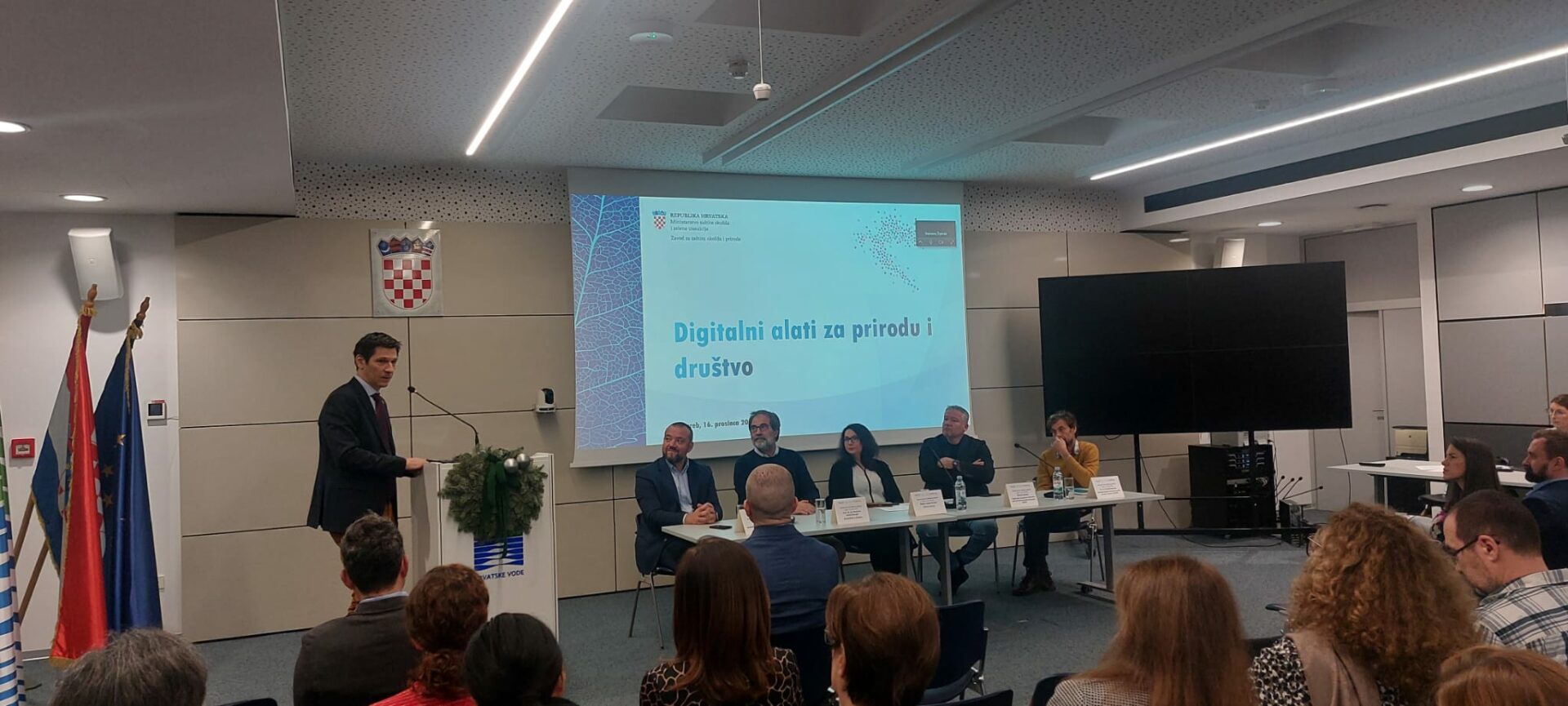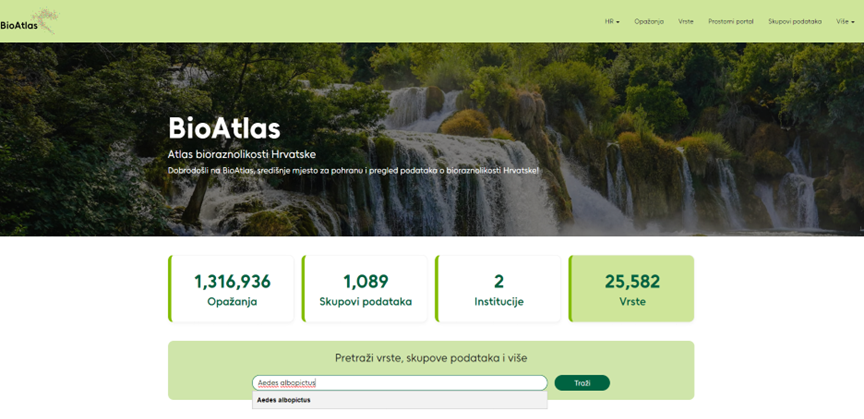Digital tools for nature conservation


The State Institute for Nature Protection of the Ministry of Environmental and Nature Protection has gathered experts from interdisciplinary fields to present two projects based on digital technology as a platform for nature conservation. The projects aim to consolidate all known information on the spatial distribution of animal and plant species throughout the Republic of Croatia in order to protect them in general, but also in the implementation of renewable energy capacity building projects. The aim of these projects is to protect all ecosystems in the Republic of Croatia as a whole, including surface and underground aquatic habitats. The presentation of the results of these projects was attended by experts from the state administration, from different but interrelated scientific and professional fields, from the private sector and from non-governmental organisations.
In her speech, Minister Marija Vučković, M.Sc. emphasised the importance of the aforementioned projects and then announced the introduction of legal acts to optimise waste management, habitat restoration and water management. Dr Aljoša Duplić, Director of the Institute for Environmental Protection and Nature, who also chaired the event, emphasised the alarming UN data that the greatest global threats to today’s society are climate change, pollution and environmental degradation. He also pointed out that the main sources of greenhouse gas emissions, as one of the main sources of pollution, are in fact industry, non-renewable energy sources and transport. He also emphasised that it is difficult to protect or manage resources over which we have no control.
The project team of the State Institute for Nature Protection of the Ministry of Environmental and Nature Protection presented the BioAtlas project, the aim of which is to create a biodiversity mapping, i.e. an overview of the spatial distribution of species of flora and fauna in the Republic of Croatia. This approach not only provides valuable insights into the habitats of the animal and plant species that inhabit the territory of our country, but is also a prerequisite for their protection. In addition, the interested public was given an insight into the user-friendliness of these maps and all the possibilities for graphical and statistical visualisation of species distribution. The project of sensitivity maps for the placement of solar and wind power plants in the Republic of Croatia was then presented by experts from the Hrvoje Požar Energy Institute, the State Institute for Nature Protection and the global organisation The Nature Conservancy. The representatives presented the importance of these maps in various aspects to the interested public. With their help, investors can identify areas in the Republic of Croatia that are suitable for the construction of solar panels and wind turbines without jeopardising the biodiversity of birds, bats and wildlife.
In addition to the undeniable purpose of these projects, the participants were given an insight into the complex process of information gathering, the realisation of ideas, the progress and development of technical aspects, as well as the cooperation of various institutions, without which these fruitful results would not have been possible. The event ended with a panel discussion in which experts from the following institutions participated: University of Osijek, Green Action, HUZSPO, Croatian Chamber of Commerce and REGEA. All representatives of the mentioned institutions agreed on the importance of the BioAtlas and the sensitivity maps and emphasised that sharing the results of biodiversity monitoring between science and practise as well as the use of digital tools and artificial intelligence in the field of environmental protection and energy is crucial.


